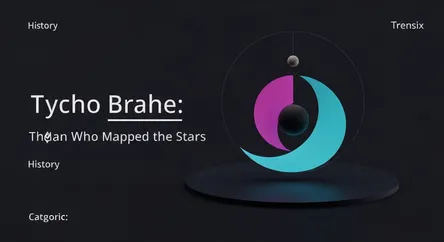History
Tycho Brahe: The Man Who Mapped the Stars

Discover Tycho Brahe, the Danish astronomer whose remarkably precise, pre-telescopic observations of the cosmos paved the way for Kepler's laws.
What is it?
Tycho Brahe (1546-1601) was a Danish nobleman and pioneering astronomer renowned for his comprehensive and unprecedentedly accurate naked-eye observations of the stars and planets. Granted the island of Hven by King Frederick II of Denmark, he established the Uraniborg observatory, a research center equipped with large, sophisticated instruments of his own design. Brahe cataloged over 1,000 stars with remarkable precision. He proposed a "geo-heliocentric" Tychonic system, where the Sun orbits the Earth and the other planets orbit the Sun, as a compromise between the Ptolemaic and Copernican models.
Why is it trending?
Tycho Brahe's legacy is foundational to the Scientific Revolution. His meticulous observation of a "new star" in 1572 (a supernova) and a comet in 1577 challenged the long-held Aristotelian belief that the heavens were perfect and unchanging. By proving these phenomena were far beyond the Moon, he helped dismantle ancient cosmological models. His greatest contribution, however, was the vast and highly accurate dataset he compiled. This data, especially concerning the orbit of Mars, was inherited by his assistant, Johannes Kepler, who used it to derive his revolutionary laws of planetary motion.
How does it affect people?
The work of Tycho Brahe fundamentally changed humanity's understanding of the universe. By championing empirical, systematic observation and demonstrating the importance of accuracy, he professionalized the practice of astronomy. His work directly enabled Kepler's breakthroughs, which in turn provided a crucial foundation for Isaac Newton's law of universal gravitation. This chain of discovery underpins modern physics and technology, from satellite orbits to our broader comprehension of the cosmos. Brahe's emphasis on precise, repeatable data collection remains a cornerstone of the scientific method today.